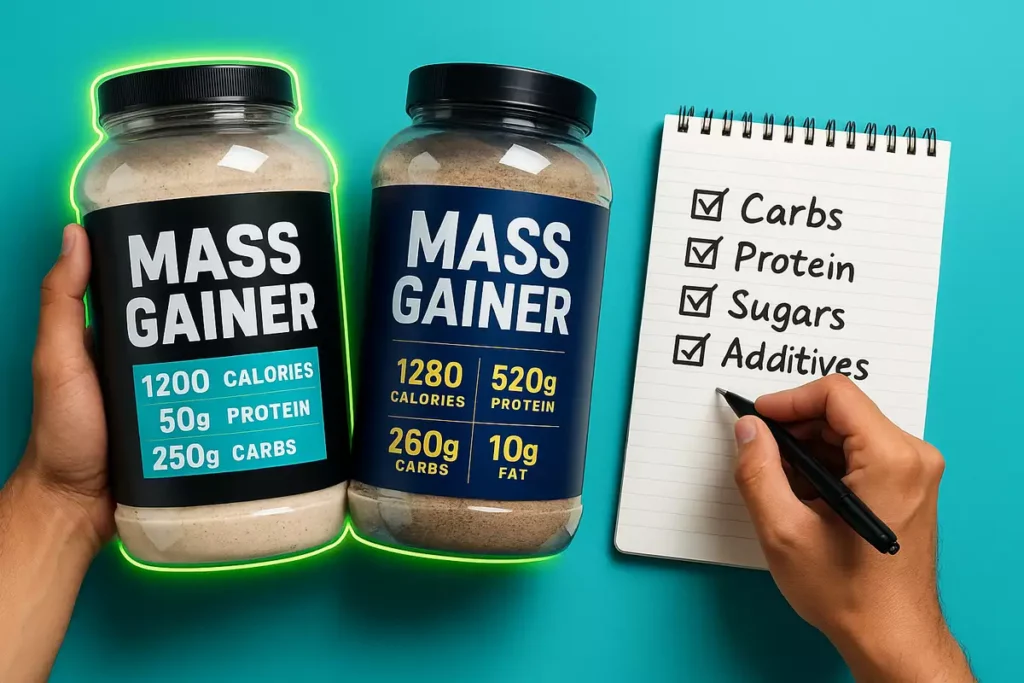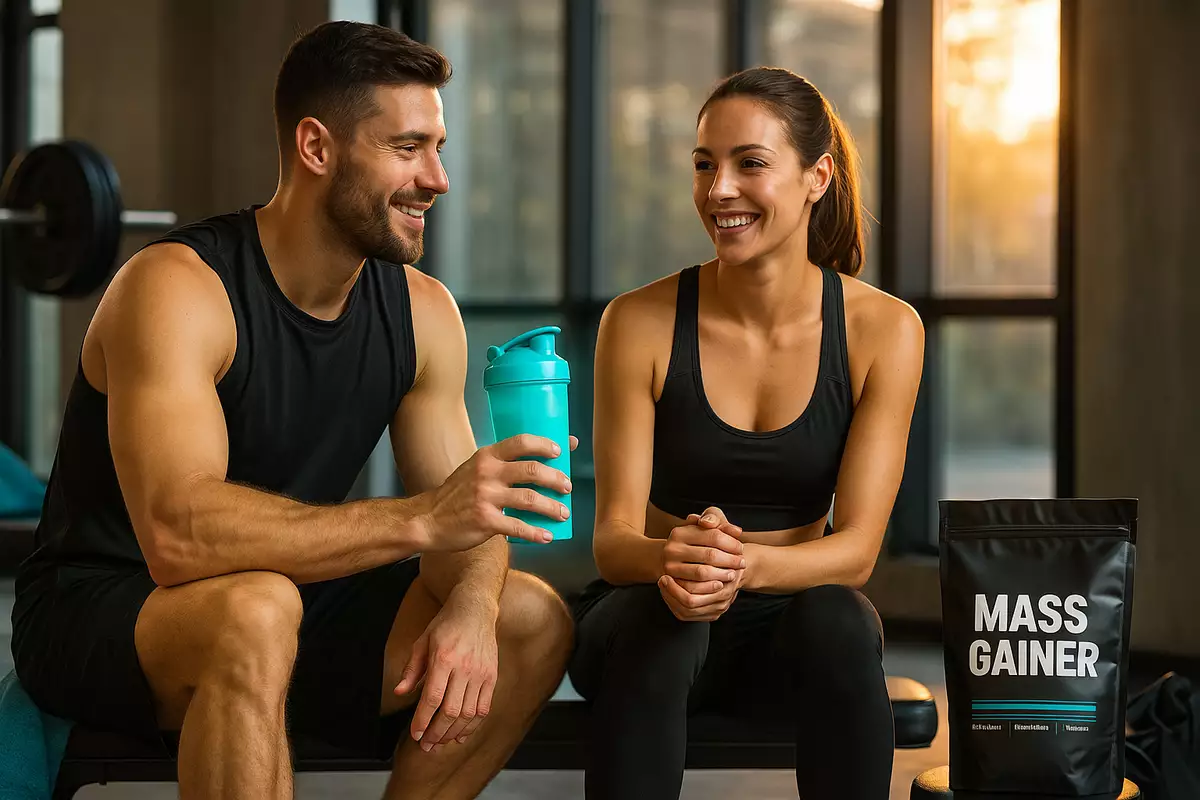Struggling to eat enough to match your intense training? You’re not alone. Many athletes burn thousands of calories daily yet fail to grow.
That’s where mass gainers come in—power-packed, calorie-dense shakes designed to help you hit your goals without stuffing your stomach with endless meals.
Whether you’re a hardgainer, endurance athlete, or just someone with a crazy metabolism, this guide breaks down when and how to use mass gainers for real results.
Table of contents
Who Needs a Mass Gainer and Why?

Let’s be real—hitting super high calorie targets every single day isn’t easy. As a coach and athlete, I’ve personally struggled with this, especially during intense bulking phases.
If you’re training hard, burning a ton of calories, and still find it tough to gain weight or even maintain energy levels, you’re not alone.
Mass gainers are not just for skinny teens. They’re for any athlete—bodybuilders, cyclists, basketball players, or CrossFitters—who have high energy demands and struggle to eat enough through regular meals.
Whether you’re someone like Luca, a cyclist burning over 3,000 kcal daily, or a hard-training lifter like I used to be, a well-planned mass gainer can be a total game-changer.
To understand if you’re the right candidate, I also recommend reading mass gainer for teens guide and lean muscle vs fat gain from mass gainer.
What Is a Mass Gainer?
A mass gainer is a high-calorie supplement typically packed with protein, carbs, fats, vitamins, and sometimes creatine or digestive enzymes.
Some provide 500 kcal per serving, while others go beyond 1,200 kcal.
The goal? To help you reach your calorie surplus in an efficient, convenient way—especially when appetite or time is a limiting factor.
Many gainers use fast-digesting carbs like maltodextrin. But the better ones include complex carbs, clean fats, and balanced macros.
Want to get the most out of your shake? Check out this best absorption guide for mass gainers.
Top Benefits for High-Calorie Athletes

From my experience—both personally and with clients—mass gainers offer a few standout benefits:
– Effortless Calorie Boost
If you’re someone who burns 3,000+ kcal daily, eating enough whole food gets exhausting. A gainer can give you 600–1,000 kcal in a couple of gulps.
– Supports Muscle Growth and Recovery
With the right balance of carbs and protein, you can recover faster post-workout and support lean mass gains.
– Convenience
For athletes like Jordan, a busy basketball player I coached, preparing multiple large meals daily just wasn’t practical. A midday shake made it manageable.
Personally, I used a mass gainer during a winter bulk when my appetite crashed. It made a huge difference in hitting my daily intake goals without feeling bloated from eating all day.
You can also explore this comparison of mass gainer vs protein shake to know which suits your needs better.
When and How to Use Mass Gainers
Timing matters. I’ve found the best windows to take a mass gainer are:
– Post-workout
Your body’s primed for nutrient uptake.
– Between meals
A liquid shake won’t kill your appetite like a heavy meal.
– Before bed (only if you tolerate it well)
Some gainers can cause bloating before sleep, so test it.
I break down these timing strategies more in this article on the best time to take mass gainer.
Pro tip: Start with half a serving to see how your body reacts. And always read the label—some are loaded with sugar or artificial stuff.
When I used Optimum Nutrition’s Serious Mass, I took half a scoop post-workout and another mid-afternoon. That worked perfectly for me.
If you’re curious about night use, read this guide on mass gainer before bed.
Real-World Use Case: Athlete Scenario

Let’s compare two types of athletes:
- Luca is a 68 kg endurance athlete from Italy. His calorie burn is massive, and solid meals weren’t enough. We added half a serving of mass gainer after long rides. Within 4 weeks, his weight and strength started climbing steadily.
- On the other hand, Marcus, a 90 kg strength athlete, didn’t need a gainer. He had a strong appetite and ate dense meals with ease. We stuck to whole foods and added peanut butter, oats, and rice to increase calories naturally.
The takeaway? It’s not for everyone, but it works when used intentionally.
Mass Gainer vs Whole Foods: What’s Better?
Let me be clear—I always prefer real food first. Whole foods provide better satiety, fiber, and a variety of nutrients.
But sometimes, liquid calories are necessary. During my own bulks, there were days I just couldn’t chew another bite. That’s where a clean, balanced gainer helped.
Here’s my advice:
- Choose food-based bulking as your foundation
- Use gainers as a tool, not a crutch
- If digestion is an issue, homemade shakes (like oats, whey, banana, peanut butter) can be a great middle-ground
This detailed article comparing mass gainer and whole food bulking can help you make a smarter choice.
Tips for Choosing the Right Mass Gainer

Not all gainers are created equal. Here’s what I recommend checking before you buy:
– Carb-to-Protein Ratio
Ideal for most athletes is around 2:1 or 3:1.
– Ingredients
Look for oats, sweet potato powder, MCT oils—not just maltodextrin.
– Digestibility
Some brands cause bloating. I had issues with a local high-carb gainer once, and it made me rethink the ingredient list.
Also, don’t go overboard—more isn’t always better.
One client, Farah from the UK, gained 3 kg of fat in 6 weeks because she added a mass gainer without adjusting her meals. We switched her to real food, and her results improved dramatically.
Conclusion: Who Should Actually Use It and When to Avoid
To wrap it up:
✅ Use a mass gainer if you…
- Are an athlete with high calorie needs
- Struggle to eat enough daily
- Need a quick recovery meal on the go
❌ Avoid it if you…
- Can meet your calories with food
- Have poor digestion or are trying to gain weight slowly
- Are not training hard enough to justify the extra calories
From a coach who’s been there—I’ve used mass gainers wisely, and I’ve also made mistakes.
When used right, they’re a powerful tool. When misused, they lead to fat gain and digestive issues.
Listen to your body, and if you need a hand navigating it, I’m here to help.



Leave a Reply